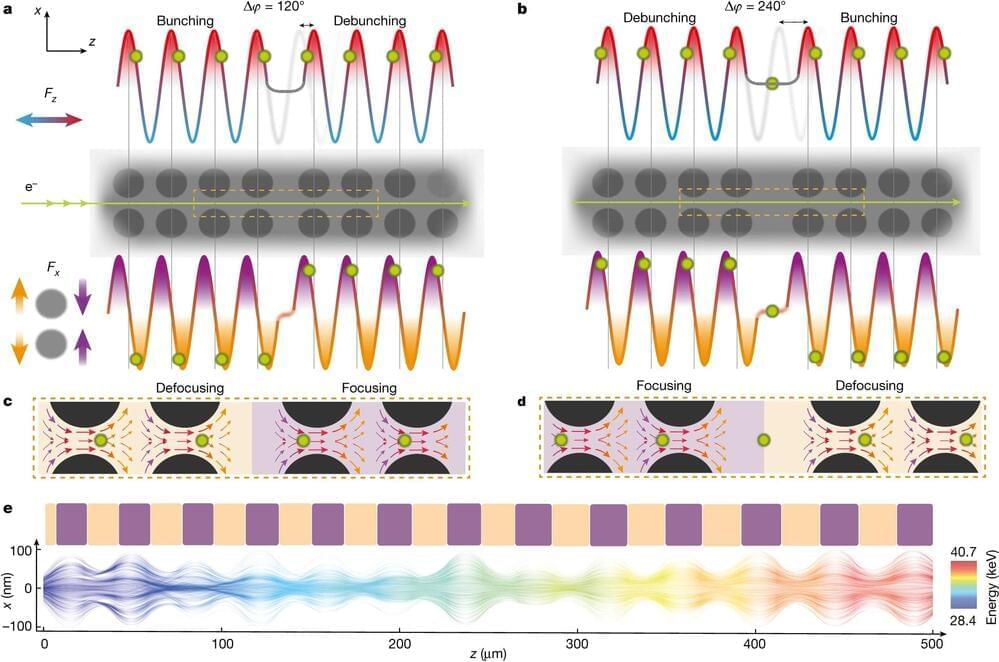Particle accelerators are crucial tools in a wide variety of areas in industry, research and the medical sector. The space these machines require ranges from a few square meters to large research centers. Using lasers to accelerate electrons within a photonic nanostructure constitutes a microscopic alternative with the potential of generating significantly lower costs and making devices considerably less bulky.
Until now, no substantial energy gains were demonstrated. In other words, it has not been shown that electrons really have increased in speed significantly. A team of laser physicists at Friedrich-Alexander-Universität Erlangen-Nürnberg (FAU) has now succeeded in demonstrating the first nanophotonic electron accelerator —at the same time as colleagues from Stanford University. The researchers from FAU have now published their findings in the journal Nature.
When people hear “particle accelerator,” most will probably think of the Large Hadron Collider in Geneva, the approximately 27 kilometer long ring-shaped tunnel which researchers from around the globe used to conduct research into unknown elementary particles. Such huge particle accelerators are the exception, however. We are more likely to encounter them in other places in our day to day lives, for example in medical imaging procedures or during radiation to treat tumors.
